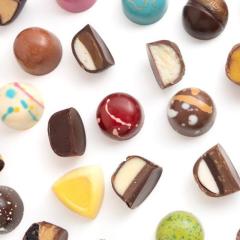-
Welcome to the eG Forums, a service of the eGullet Society for Culinary Arts & Letters. The Society is a 501(c)3 not-for-profit organization dedicated to the advancement of the culinary arts. These advertising-free forums are provided free of charge through donations from Society members. Anyone may read the forums, but to post you must create a free account.
Molded and Filled Chocolates: Troubleshooting and Techniques
-
Similar Content
-
- 3 replies
- 826 views
-
- 1 reply
- 480 views
-
- 949 replies
- 269,765 views
-
- 796 replies
- 182,811 views
-
- 20 replies
- 3,543 views
-
-
Recently Browsing 0 members
- No registered users viewing this page.




Recommended Posts